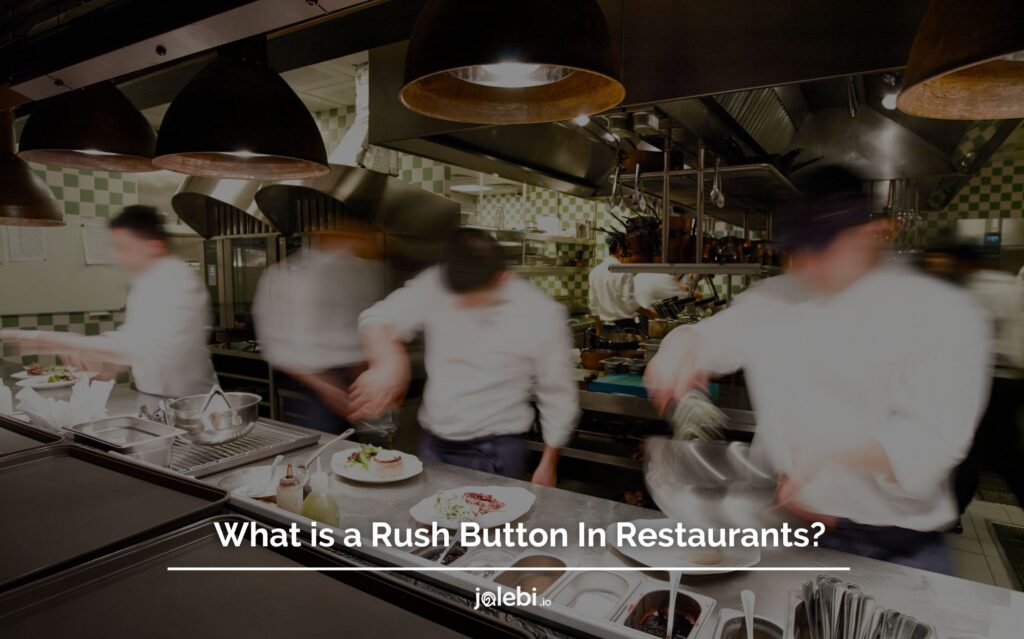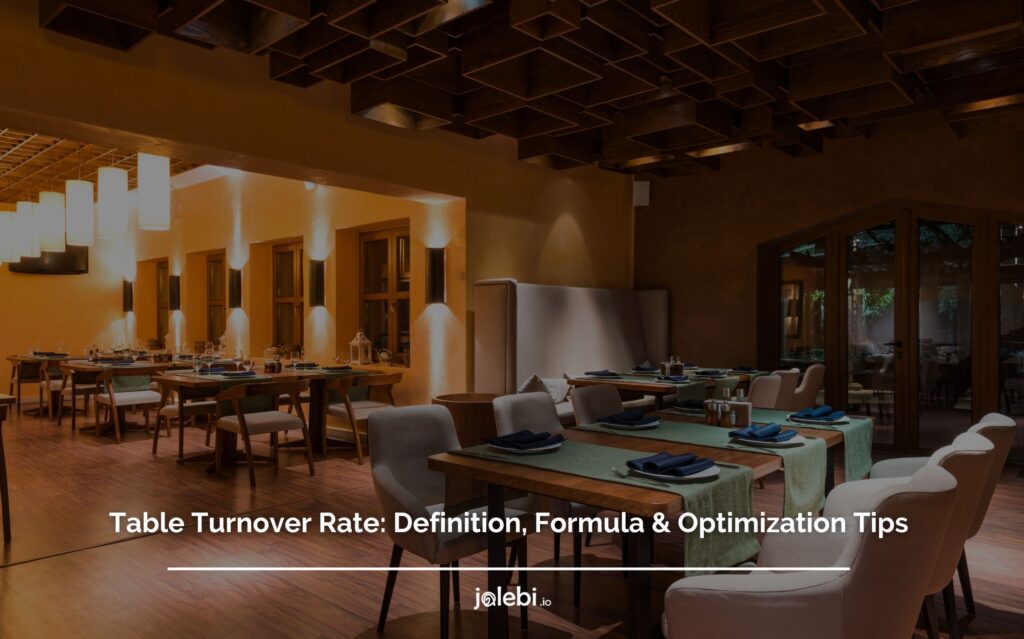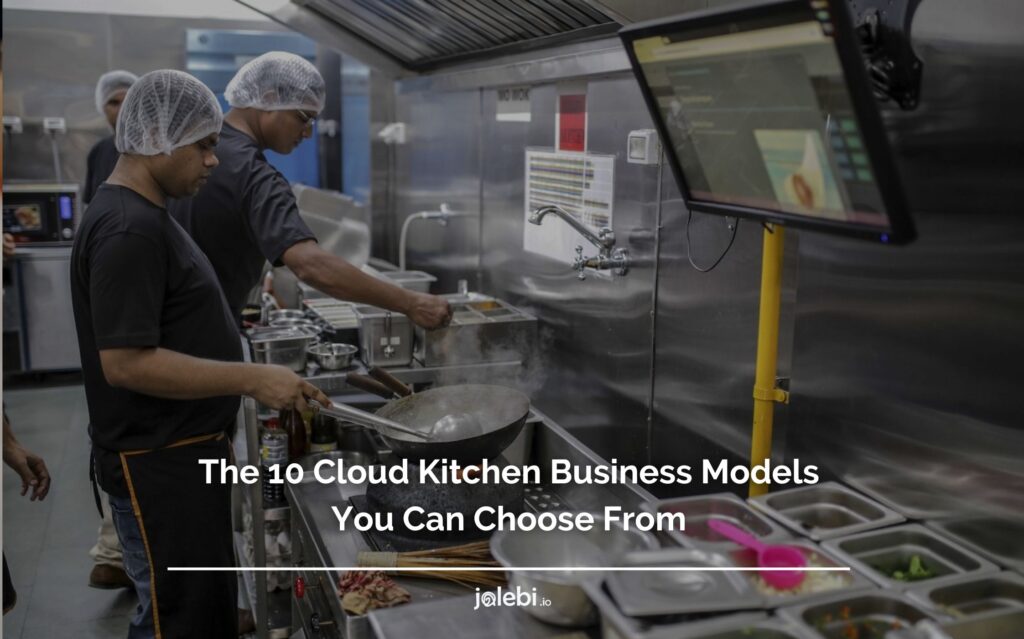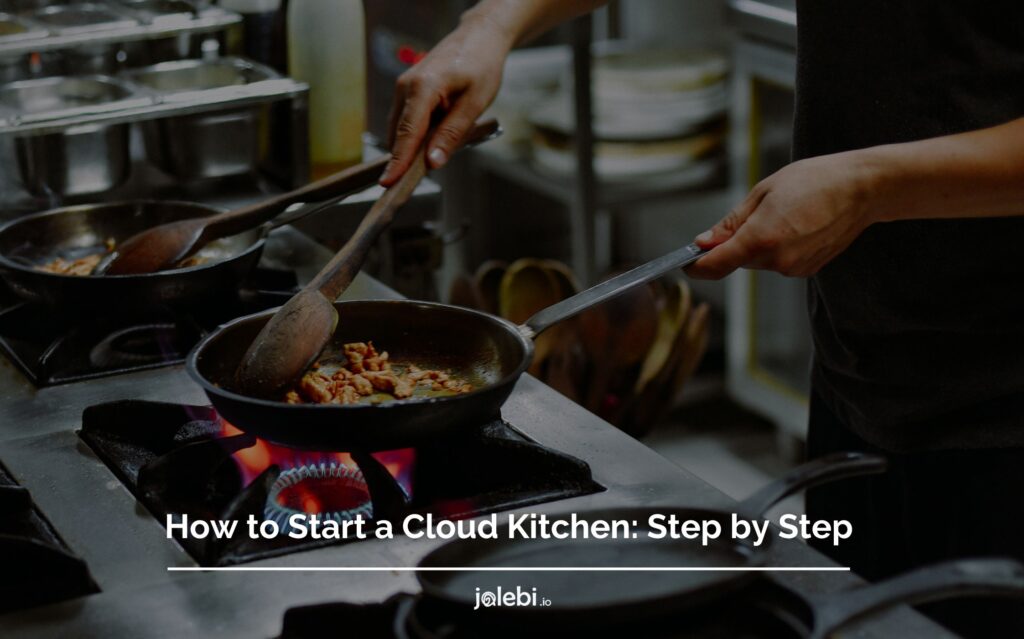Table of Contents

It is not an easy task to get a restaurant off the ground — and keep it running — as anyone who works in the food service industry will attest.
Restaurant ownership or operation is challenging in today’s competitive food service economy. One needs a system that emphasizes average revenue for a restaurant over cost to increase your chances of success.
More than a system, one also needs a robust platform to get the feet off the ground. We want to share the stress. jalebi.io understands the sweat and struggle of getting that average revenue for a restaurant! For that and many other reasons, we developed the world’s inventory-first restaurant operating system.
Keeping reading our blog as we dig a little deeper into the ins and outs of an average revenue for a restaurant.
What is Average Restaurant Revenue?
An average restaurant’s revenue is the amount of money it makes. The amount of revenue that enters your business through any of your revenue streams is revenue, not profit margin – which is what remains after you’ve paid all of your operating expenses. Sales include food, drink, merchandise, online orders, telephone orders, gift cards, consumer packaged goods, and more.
Across restaurant types, regions, sizes, and service models, average revenue varies significantly from restaurant to restaurant. A fast-food restaurant and a fine dining establishment operate on very different business models.
The best way to estimate average restaurant revenue for your restaurant business plan is to conduct a market study on demographics, footfall, population, median income, and median house prices.

As a result of the brand’s reputation and trust in a community, a new location of a multi-location restaurant may generate a slightly higher revenue than a brand-new one. Still, this number is an excellent baseline — because unexpected bumps in the road could offset this benefit.
How To Calculate Restaurant Revenue Easily
Let us walk you through how to calculate restaurant revenue.
The revenue for a restaurant is essentially the total amount of money that the restaurant receives from its sales during a specific period. Here’s a basic example:
Suppose you own a restaurant, “The Pizza Place”, which sells two main items: Pizzas and soft drinks. Let’s say in one day, you sell 100 pizzas at $20 each and 80 soft drinks at $3 each.
To calculate the total revenue for pizzas: Multiply the number of pizzas sold by the price of each pizza. In this example, that would be 100 pizzas * $20/pizza = $2000.
To calculate the total revenue for soft drinks: Multiply the number of soft drinks sold by the price of each soft drink. In this case, that would be 80 drinks * $3/drink = $240.
To get your total restaurant revenue for the day, you would add up the revenues from each product sold. So, the total revenue of “The Pizza Place” for that day would be $2000 (pizzas) + $240 (drinks) = $2240.
So, that’s how to calculate restaurant revenue in a basic scenario, but remember that actual revenue calculation might be more complex if you have a larger menu or additional sources of income like merchandise or catering services.
Finally, keep in mind that knowing how to calculate restaurant revenue isn’t just about tallying up sales at the end of the day.
It can also help you identify which items are the most profitable and understand your restaurant’s financial health.
By learning how to calculate restaurant revenue, you’re better equipped to make strategic decisions about pricing, menu selection, and cost control, ultimately increasing your restaurant’s profitability.
Average Restaurant Profit Margin

The net profit margin of a restaurant represents the percentage of profit generated for every dollar of sales after taking into account business costs.
The expenses associated with running a business are taxes, inventory, labour, and other general costs.
After subtracting the direct costs of goods sold (food and labour) from total sales, your gross profit margin shows how much money you have left.
A restaurant’s net profit margin is a more accurate estimate than its gross profit margin since it includes all expenses associated with running the restaurant, not just those related to making and serving food.
- How are these numbers calculated?
Here are the equations for net profit margin and gross profit margin that you can use to calculate your margins quickly:
- Revenue – All costs / Revenue = Net profit margin
If a restaurant takes in $20,000/month in sales and spends $18,000/month in expenses, its net profit margin is 10%.
- Revenue – Cost of goods sold / Revenue = Gross profit margin
With a gross profit margin of 40%, a restaurant taking in $20,000 per month and spending $12,000 on CoGS (only food and labor costs) has monthly sales of $20,000 and a monthly cost of goods sold of $12,000.
A restaurant’s gross profit margin can tell whether it operates efficiently. Still, the net profit margin will tell you how much money you are taking home after all the costs of running the business are taken into account.
Nevertheless, gross profit margin and net profit margin can help diagnose your restaurant’s health and identify any problems that need to be addressed.
Average Revenue For A New Restaurant Under 12 Months Old
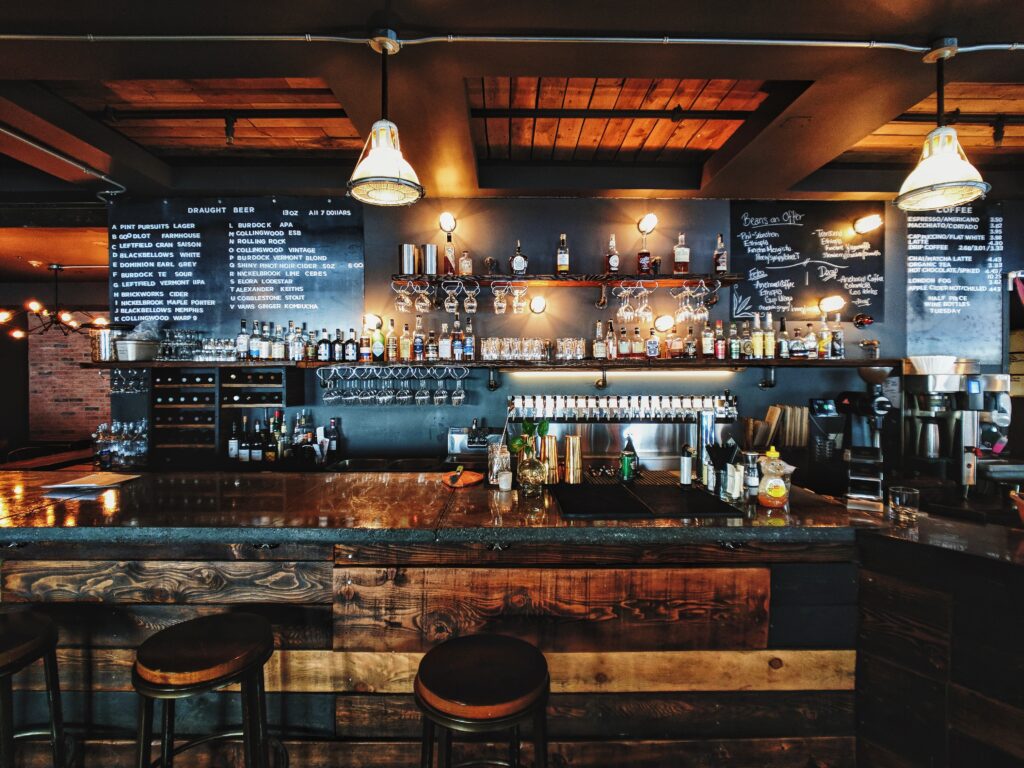
The restaurant industry is hugely varied and complex, making it difficult to judge accurately which establishment type will see the most success and revenue.
Many factors impact a brand-new restaurant’s performance such as its location, type of cuisine served, average restaurant capacity, and service model – these are just some contributing factors when creating predictions for potential profits.
However, according to the 2019 Restaurant Success Report from Toast, a survey conducted with 43 new restaurateurs has indicated that the average monthly revenue for a new eatery that is less than 12 months old sits at $111,860.70.
This figure may be higher for multi-location restaurants due to their already established reputation in the community; however, this provides an excellent benchmark for those looking to roughly estimate how much money they can potentially make in their first year of business.
Average profit margins by restaurant type
The average profit for the restaurant depends on its type.
The profit margins for different types of restaurants can vary greatly.
- Full-service restaurants
Full service restaurants (FSRs) typically have a profit margin of 2-6%. This is because FSRs have a larger staff and more expenses compared to other types of restaurants.
However, factors such as restaurant size, price range, location, and turnover rates can also affect the profit margin.
- Cafes
On the other hand, cafes have higher profit margins ranging from 2.5-15%. This is because cafes often focus on specialty coffee beverages, pastries, and light meals which can be priced at a premium.
The average profits for restaurants can still vary depending on factors such as location, menu offerings, efficiency, and competition.
- Fast food restaurants
Fast food restaurants or quick service restaurants (QSRs) have average profit margins of around 6-9%. This is higher than FSRs because they require fewer staff and use less expensive ingredients. The average profit for the restaurant for fast-food depends on the factor that it has a higher turnover rate.
- Food trucks
Food trucks, like fast food restaurants, have profit margins of around 6-9%.
However, they benefit from lower overhead costs due to not having to pay rent, insurance, staff, and utilities. They can also make up for bad weather with rental fees for events.
- Catering businesses
Catering businesses also have low overhead costs but similar food costs as FSRs.
The average profit margin for catering businesses is 7-8%, although high-end catering businesses can have profits of 15% or more.
Overall, the profit margins for different types of restaurants depend on various factors and can vary significantly.
Understanding the Importance of Average Revenue for Restaurants
Average revenue is a key performance indicator that provides insights into the financial performance and profitability of a restaurant.
It serves as a benchmark for evaluating the success of a restaurant’s operations and can help identify areas for improvement.
By monitoring and analyzing average revenue, restaurant owners and managers can make informed decisions to optimize their business strategies and increase profitability.
One of the main benefits of tracking average revenue is that it allows restaurant owners to compare their performance against industry standards.
By understanding how their average revenue compares to similar establishments, restaurant owners can gain valuable insights into their competitive position and identify growth opportunities.
This information can be beneficial when setting pricing strategies and making menu adjustments to attract more customers and increase revenue.
In addition to evaluating overall financial performance, average revenue can also provide insights into the effectiveness of marketing and promotional efforts.
An Overview of the UAE’s Market
Over the forecast period (2022 – 2027), the UAE food service market is expected to register a CAGR of 6.8%.
A major impact of COVID-19 on consumer food service in 2020 was seen across all consumer food service categories. Due to federal lockdown restrictions, businesses in this industry were forced to close their doors to eat-in customers for long periods to prevent crowds of people from gathering at consumer foodservice outlets. Because independent food service operators lack the robust support systems of chained players, they were more vulnerable to the COVID-19 crisis in 2020.
Foodservice operators lacking a national or global strategy had a more challenging time adapting to COVID-19 in 2020, especially those with no online presence at the start of the pandemic.
Increasing tourist arrivals, urban lifestyles, and evolving consumer preferences have propelled the country’s food service market to grow. As Emiratis increasingly visit food service channels to spend time with their families due to the lack of recreational opportunities in the country, the food service sector is a growth opportunity.
With the emergence of food trucks and street stalls, along with the availability of international cuisines, customers are also experiencing a new experience, thereby increasing their spending on food.
Why Restaurant Profit Margins Are So Low?
There are various reasons why the restaurant industry has low-profit margins.
One of the main reasons is the “Big Three” expenses. These expenses are the cost of goods sold (COGS), labor, and overhead.
Typically, one-third of a restaurant’s revenue goes toward COGS and another third goes toward labor expenses.
The remaining revenue is used to cover overhead expenses such as utility bills and rent.
After all the expenses are paid, restaurants often end up with a net profit of only 2 to 6%.
The cost of goods sold is the cost of the ingredients used to make the food. Labor expenses include wages for the staff.
Overhead expenses are the costs associated with operating the restaurant, such as rent and utilities.
These three major expenses heavily impact the profit margins of restaurants. It is crucial for restaurant owners and managers to carefully manage these expenses in order to improve their profit margins.
This can be done through effective inventory management, labor scheduling, and cost control measures.
Ultimately, finding ways to reduce these expenses can help restaurants increase their net profit and achieve financial stability.
Revenue Drivers for a Restaurant
There’s no perfect manual to achieve the perfect average revenue of a restaurant.
But with focused effort and effective management strategies, we sure can guarantee a seat in the crowd!
Here’s how you can maximize revenue drivers for your restaurant:
- Establish a performance baseline
You can start by examining the performance of your restaurant by using specific key performance indicators (KPIs) you deem most relevant.
Several of these KPIs may be difficult to calculate on your own, but intuitive dashboards and reports can be generated using your POS data, making the process easy and painless.
Understanding the performance of your hotel restaurant as it stands is important if you want to build a strategy to maximize its profitability.
There are three key performance indicators (KPIs) you should consider when assessing your baseline performance and how to calculate APC in a hotel:
- Total Revenue / Seat Hours = Revenue Per Available Seat Hour (RevPASH)
(Seat hours = Total number of seats x open hours)
- Total Number of Seats / Number of Seats Filled = Seat Occupancy
- Total Revenue / Number of Covers = Average Check
You can use RevPASH calculations to determine when to upsell and when not, as well as how successful your marketing efforts are. Using Seat Occupancy Analysis, you can determine if your demand exceeds your seat supply or if you need to attract more customers.
Lastly, you can ensure you don’t lose revenue by comparing table mixes to party sizes.
- Analyze demand drivers
The next step is to conduct a demand analysis based on best practices for revenue management. All of your departments will have a better understanding of what they are responsible for in optimizing their operations and boosting revenue once actionable steps can be identified, whether it is traffic (covers), sales (average check), or service (consistency in service, reputation, and guest satisfaction).
To boost F&B profitability, you must understand what attracts people to your restaurant (and keeps them returning).
- Traffic
Identifying your restaurant’s traffic is the first step. What are your peak arrival and meal periods? What are your average and median party sizes? What are your most profitable guest segments and what are the most profitable restaurant types?
You can make sure you are not losing revenue by comparing metrics like table mix with your party sizes.
- Sales
Your restaurant’s average check per cover (APC), or how much each guest spends when they visit your restaurant, will give you insights into how much revenue your restaurant receives from each guest.
An average check per cover (APC) is calculated as the following: Total number of sales / total number of customers.
- Experience of the guest
Lastly, you can measure your restaurant’s service quality by analyzing guest experience. You can use meal duration and guest tribe indicators to gauge guest satisfaction.
A dining duration measure can help you monitor the quality of your service, while a spending-per-hour calculation can help you optimize your servers’ sales.
To visualize your guests’ purchase behavior at a high level, tribes can be created. Which tribes drive the highest average check and ultimately the strongest profit and revenue performance for your restaurant?
To get the results you anticipate, you need to validate your strategies or pinpoint where you need to focus. You can comprehensively understand your traffic, sales, and guest experience by measuring your demand generation every hour, every day of the week, and every month. To inform your profit strategy and targets, you can identify patterns and trends in demand for your restaurant.
- Optimize labor costs
It has been estimated that the average labor cost percentage across all types of restaurants has increased to 31.6%, according to a recent study by BDO. By cutting labor costs, you will be able to increase profit margins.
You don’t have to fire your staff or compromise service quality to save money. Instead, you can use technology that optimizes your labor needs. You can accurately forecast your staffing needs based on reservation and historical sales data, so you don’t overschedule shifts or incur overtime charges.
- Leverage mobile payments
Allow guests to pay using their smartphones by scanning a QR code and making a payment with their cards. It eliminates the need to wait for the server to pick up the bill presenter, go to the POS to make a payment, and then pick it up again.
By doing so, you’re enabling faster table turnover and maximizing the number of parties you’re capable of serving. Diners can pay when they’re ready and leave more quickly. In general, the more covers your restaurant serves, the more revenue it generates and the higher the potential for higher profits.
- Reduce food waste
According to a Boston Consulting Group (BCG) report, restaurants will lose approximately $1.5 trillion in revenue due to food waste by 2030.
If you throw away your food, you are effectively losing money that could have been used for profit or other expenses. Around one-third of the average revenue of a restaurant is allocated to the cost of goods sold (COGS).
The World Resources Institute found that restaurants save an average of $7 for every $1 invested in reducing food waste. That return on investment certainly makes sense if you’re trying to improve your profitability.
7. Lower utility bills
Restaurants consume about five to seven times as much energy per square foot as other commercial buildings. It can be as much as ten times as much for fast-food restaurants and other establishments with high sales volumes. Higher utility bills amount to most of the average revenue for a restaurant.
Tim Powell, Managing Principal at Foodservice IP says fixed costs cover up to 33% of a restaurant’s sales.
Are you thinking about how to improve your restaurant profit margin?
Investing in eco-friendly kitchen appliances and lighting will reduce your utility bills, so you’ll have more money to spend on sales.
Although the initial investment may seem steep, you will save more than enough on your utility costs in the long run.
8. Optimize your menu
To begin, it is essential to create a well-crafted menu that maximizes each food item’s potential to increase sales. This means taking the time to think through how each dish should be named, described, and placed to draw attention to the menu.
A simple but timeless trick is to give existing dishes a modernized twist. Renaming an otherwise basic item highlights its unique qualities while helping it stand out from other dishes. It also lures customers in and entices them to try something out of the ordinary. Attention can also be drawn to more expensive items by placing them where viewers first lay their eyes on the menu–right at the top or bottom of the page.
Beyond tactical menu placement, pricing can have an impact as well. A few higher-priced options balanced by some lower-price items speak volumes and tempt customers into ordering more than they might have originally intended if there were only unaffordable dishes featured in one price range.
Through careful optimization of your restaurant’s menu–namely its titles, descriptions, pricing, and presentation–you can appeal directly to a larger customer base while aiming ever higher for upselling opportunities that will maximize sales in the end result.
9. Create social media presence
In today’s digital age, having a strong social media presence is essential for the success of any business – restaurants included.
Social media allows restaurants to promote their offerings, build relationships with customers, and reach out to potential customers. Even better, it’s easier than ever to create accounts on multiple platforms like Facebook, Twitter, and Instagram in order to maximize your reach.
For restaurants looking to take advantage of social media should start by investing in a free social media management tool that will help them monitor their channels and engagement levels.
With this kind of resource at their disposal, restaurants can quickly respond to customer inquiries and keep track of customer feedback.
They can also use it as an opportunity to showcase their offerings by curating content with pictures and videos of dishes or unique menu items.
While they shouldn’t put all their eggs into one platform ‒ since different customers may engage more on one platform than others ‒ they should actively maintain a presence on the mediums most suitable for their brand.
Overall, having a secure presence on multiple popular social networking sites offers businesses the best chance of success when connecting with consumers online.
10. Improve service speed
In order to increase the speed of service, one of the most important tools to invest in is a mobile point of sale (POS) system.
This technology has revolutionized servers’ ability to manage their tables and orders more efficiently by allowing them to send each table’s order directly from the POS straight into the kitchen instead of having to manually enter it at a busy terminal where other servers may be bottlenecked waiting in line.
Improving the speed of service also means considering how long each menu item takes to prepare, and creating an optimized pre-order system.
By utilizing staff resources to look ahead and pre-make items such as salads, condiments, and desserts with accurate estimates for each culinary dish each day can help greatly reduce wait times.
Furthermore, organizing ingredients according to trending dishes during certain times will allow for convenience and quickness in delivering customer orders once they are placed.
It is essential that these processes are taken into consideration in order to maximize the speed of service while producing quality results for your customers.
11. Partner with reliable delivery services
In recent decades, the fast-paced and digitally oriented lifestyle of many consumers has only increased.
As people are expected to juggle a multitude of tasks throughout their days, convenience has become one of the most sought-after features of any product or service.
For businesses looking to stand out in this competitive marketplace, partnering with popular delivery services is a great way to provide their consumers with the accessibility and convenience they crave while also bringing in new customers.
Services like Seamless, GrubHub, and Uber Eats make it easy for customers to place orders directly from their smartphones — without having to leave the comfort of their homes.
This makes ordering from small businesses simpler than ever before and encourages locals to patronize them instead of a chain or large restaurants.
Additionally, by utilizing one of these services your business can streamline its own back-end processes which can lead to improved customer satisfaction and loyalty over time.
Furthermore, offering delivery options has been shown to boost revenue due to higher average order values as well as increased repeat purchases — thus allowing your business access into an entirely new market segment overnight.
12. Start upselling
Upselling is one of the key strategies for restaurants to increase revenue and profits. It involves convincing customers to order or upgrade a product or service, increasing value for both customers and businesses.
That said, upselling requires servers to be knowledgeable, presentable, and persuasive enough to be able to make suggestions that supplement a customer’s original order and get them thinking about extra add-ons they may not have initially considered.
Making upselling part of your restaurant’s standard service can help create an environment where customer satisfaction is even more than expected.
Research shows that mobile POS technology can help encourage servers to effectively upsell, increasing average check size.
As the software allows easy access to accurate data on item modifiers, it helps servers suggest relevant choices based on the customer’s base order as well as their preferences. This ultimately leads to higher sales and increased customer value at every turn.
13. Turn your customers into promoters
One of the best ways to turn your existing customers into promoters is by creating a personalized experience.
Establishing relationships with patrons helps build loyalty and maximize customer retention while providing an opportunity to let customers know how much their business is appreciated.
By treating your existing customers well and recognizing them when they visit your restaurant, you can go a long way in incentivizing them to become promoters of your business.
You can also use data from the customer database to get metrics on what kind of dishes they typically order, as well as reviews they left in the past about the food or service. This data can then be used to recommend new dishes that could feature seasonal items or signature recipes.
Such actions will make customers feel valued and respected, which will naturally lead them towards becoming promoters for your restaurant.
To further build loyalty, you could reward regular customers with discounts, special offers or coupons – this will encourage them to keep returning time and again!
14. Provide offers and happy hours
Offering strategic offers and happy hour deals is a great way to bring in new and existing customers for any restaurant. It provides an incentive for them to come and visit your establishment by giving something special in return.
Provide free items such as appetizers or desserts, or discount drinks that can be promoted during the happy hour to draw in the crowds. This will help increase sales and profits without having to spend extra on marketing campaigns.
Furthermore, it also helps in creating a good image for your restaurant among customers as you are giving something back to them for their patronage.
For certain restaurants, liquor is what mainly brings in the customers and this works especially true when it comes to targeting the younger crowd.
Hence, it is important to provide drinks at discounted or cheaper rates during happy hours so that they can indulge more often without fear of burning too deep a hole into their pockets.
Of course, bear in mind that providing one plus-one offers will mean lower margins but it should not be seen as an entirely bad thing if there’s an increase in overall volume associated with such offers.
All in all, providing offers and happy hours can prove beneficial for any restaurant so consider implementing them from time to time when possible!
15. Offer smaller plates
Offering smaller plates can be a great business strategy for restaurants looking to appeal to modern customers.
With the rise of small, social gatherings, people are often looking for the convenience of having a snack or sharing a plate between friends. This opens up potential opportunities in offering smaller plates that customers can snack on for an hour or less, while still providing variety and quality.
Moreover, research done by MarketsandMarkets shows that the global snack food market is projected to grow at a CAGR of 3.37% during 2021-2026. This suggests that there is an increased demand from consumers for alternative snack options as they consume snacks more often than conventional meals.
Restaurants should therefore consider adapting their offerings to reflect these changing trends by offering smaller options like tapas or a range of appetizers with interesting flavors. Not only will such creativity increase customer satisfaction but also help drive sales and profits in today’s competitive market environment.
16. Consider email marketing
Email marketing is an important tool for restaurants looking to increase their sales. It allows them to nurture a long-term relationship with customers and provide them with up-to-date information on the restaurant’s goings-on.
Through email, messages that would otherwise be limited to text can reach customers in greater detail. By sending periodic newsletters, restaurants can ensure that their customers stay informed of upcoming discounts, specials, and offers, as well as any other newsworthy items about the restaurant.
Building an effective email list requires planning out effective strategies on how often the emails will be sent, what kind of content should be included to keep people engaged and excited about the offerings at the restaurant, and having good signup forms or call-to-action buttons so people are prompted to register for your emails.
A comprehensive plan will ensure your emails have maximum impact and encourage more sales for your restaurant over time.
17. Create combo meals
Combo meals are a popular way of providing customers with the best value while catering to their needs.
Doing so allows restaurants to attract more customers and increase revenue while maintaining quality. They can be used to upsell high-profit, low-selling items and pair them with top-selling dishes or beverages for an even better offer.
For example, McDonald’s often offers “value meals” that include a burger, fries, and a drink for a discounted price. This helps customers save money while ordering multiple items at once and encourages further sales.
To create your own combo meals, start by selecting the top-selling lunch items in your restaurant or cafe.
Then try pairing it with sides and drinks that will go with it and complement each other without going overboard. Keeping it simple with only three to four items is usually enough to give customers good variety while avoiding confusion or excessive costs.
Identify combinations that have the highest potential of profitability and offer attractive discounts for customers who want great value for their money. Having combos as an option on your menu will help attract new customers and ensure they come back again!
18. Host pop up experiences
The advent of 2023 will bring in fresh changes and new strategies to boost restaurant sales. Hosting pop-up experiences is one of the most effective strategies for increasing sales.
Parties, tasting menus, small-scale events, and interactive culinary sessions are all great ways to introduce people to your restaurant’s food and culture. Such events not only bring in a larger clientele to sample the cuisine but also help build relationships between the chefs, customers, staff, and other vendors associated with the restaurant.
By introducing a multi-sensory dimension that’s outside the traditional dining experience, restaurants can create an atmosphere of exclusivity where guests feel special while enhancing their first impression of the restaurant. This helps restaurants generate more business opportunities and allows them to try out newer forms of presentations as they experiment with different trends without compromising on their usual menu offerings.
Furthermore, unexpected partnerships such as artists, musicians, or local retailers enhance customer engagement which leads to greater interaction and consequently higher sales from returning customers.
Pop-up experiences provide immense potential for businesses looking to increase their restaurant sales in a competitive market.
19. Offer customer loyalty programs
Customer loyalty programs are one of the most effective ways that restaurants can boost revenue and show appreciation to their customers.
Businesses can create various types of loyalty programs based on their individual needs and demands in order to best cater to their customers.
Points-based systems are popular, where customers earn points with every visit, either online or offline. These points can be redeemed for exclusive rewards including discounts or complimentary desserts in a restaurant setting.
Additionally, other types of reward programs offer coupons or special offers which provide an incentive to come back and purchase more. Businesses should also consider having referral bonuses for existing customers who help bring in new ones.
Ultimately, customer loyalty programs can make it easier to build relationships with customers so they keep coming back again and again.
20. Analyze restaurant reports
A restaurant POS can be an invaluable asset to any business. It provides real-time information on everything happening within the restaurant, regardless of whether the owner/managers are present or not.
This includes detailed reports of sales volumes, bills generated, offers and discounts given, items reaching expiry date, and much more.
Through these reports, restaurants can track their success across all outlets more effectively and make necessary changes when needed – for example looking at the most selling items and those that aren’t as popular, so they can consult with chefs to adjust their menu accordingly.
By having this detailed data in front of them, restaurant owners/managers will have practical insights into what works best for their customers.
Not only that but also understanding which times get the highest sales traffic will allow businesses to further increase customer satisfaction by adapting menus based on day and time – such as adding a lunchtime special menu or having weekend brunch deals – helping drive even more business through the door.
All these details will further help restaurants gain visibility on areas where they may need extra focus or resources so they can allocate the budget appropriately.
21. Increase sales and reduce overhead expenses
Increasing sales volume can be done through various strategies, such as implementing effective marketing campaigns, improving product quality, offering discounts or promotions, and expanding the customer base through targeted advertising.
On the other hand, reducing overhead expenses involves cutting unnecessary costs, streamlining operations, negotiating better contracts with suppliers, optimizing inventory management, and implementing cost-saving measures such as energy-efficient solutions.
By combining these approaches, businesses can maximize their profitability and achieve sustainable growth.
It is important to regularly review and analyze sales and expense data to identify areas for improvement and make informed decisions.
Eco-friendly appliances offer many benefits
- Reduce energy consumption
- Cost savings on utilities
- Returns on investment are high
Businesses that reduce food waste and environmental footprint generally have margins that are 3.3% higher than those that don’t.
Benchmarks and industry standards for restaurant revenue
Benchmarking your restaurant’s revenue against industry standards and competitor performance is essential for setting realistic goals and assessing your business’s financial health.
While revenue benchmarks vary depending on factors such as location, concept, and target market, understanding some general industry standards can provide a benchmarking reference.
Key revenue benchmarks in the restaurant industry include:
1. Revenue per Available Seat: This metric measures the average revenue generated per seat, indicating the efficiency of space utilization and overall customer demand. A benchmark of $XX per available seat can indicate whether your restaurant is performing above or below industry standards.
2. Revenue per Square Foot: Measuring revenue generated per square foot provides insights into efficient space utilization and revenue potential. Comparing your restaurant’s revenue per square foot to industry benchmarks can highlight space optimization opportunities or potential risks.
3. Revenue Growth Rate: This metric measures the year-over-year growth rate in revenue, indicating the restaurant’s ability to increase sales and expand its customer base.
By comparing your restaurant’s revenue growth rate to industry averages, you can identify areas for improvement or potential market performance in order to boost the restaurant revenue stream.
4. Revenue Mix: Analyzing the distribution of revenue across different sources, such as dine-in, takeout, or catering, can help assess revenue diversification strategies.
Benchmarking revenue mix against industry averages can identify opportunities for optimizing restaurant revenue streams and expanding market share.
5. Gross Profit Margin: Gross profit margin measures the percentage of revenue remaining after accounting for the cost of goods sold (COGS).
Benchmarking your restaurant’s gross profit margin against industry standards can indicate operational efficiency and profitability.
While these benchmarks provide a starting point for comparison, it’s important to consider industry-specific factors, such as restaurant type, geographic location, and economic conditions, when assessing your restaurant’s performance.
Consulting industry reports, participating in industry associations, and engaging in networking opportunities can provide additional insights into industry benchmarks.
6. Average Check Size: The average check size measures the average amount spent by each customer during a visit to your restaurant.
Benchmarking your restaurant’s average check size against industry standards can help you assess pricing strategies and identify opportunities for upselling or increasing customer spend.
7. Labor Cost Percentage: Labor cost percentage measures the proportion of revenue allocated to labor expenses, including wages, benefits, and payroll taxes.
Comparing your restaurant’s labor cost percentage to industry benchmarks can help you evaluate labor efficiency and identify potential cost-saving measures.
Benchmarking Your Restaurant’s Average Revenue: How Do You Compare?
Benchmarking your restaurant’s average revenue is crucial to understand how your business performs relative to industry standards and competitors.
By comparing your average revenue with similar establishments, you can identify areas of strength or weaknesses and implement strategies to enhance your business performance.
One key metric to consider when benchmarking your restaurant’s average revenue is the average revenue per customer.
This metric provides insights into the average amount of money each customer spends at your establishment.
Exploring different revenue streams for restaurants
While traditional dine-in revenue remains a cornerstone of the restaurant industry, exploring alternative revenue streams can provide additional avenues for growth and increased profitability.
Let’s take a closer look at some of the revenue streams commonly pursued by restaurants and how it facilitates with improving average restaurant sales growth rate:
1. Takeout and Delivery: Offering takeout and delivery services allows restaurants to cater to customers who prefer enjoying their meals at home or the office. Implementing user-friendly online ordering systems and partnering with delivery platforms can expand the customer base and generate incremental revenue.
2. Catering and Events: Leveraging the restaurant’s culinary expertise to provide catering services for special events, corporate functions, and weddings can be a lucrative revenue stream. Establishing relationships with event planners and leveraging existing customer networks can help drive business in this segment.
3. Retail and Merchandising: Selling branded merchandise, specialty food items, or packaged products can contribute to revenue diversification. Restaurants can explore options such as selling homemade sauces, spice blends, or cookbooks to capitalize on customer loyalty and enhance brand visibility.
4. Partnerships and Collaborations: Collaborating with complementary businesses can unlock new revenue streams. For example, partnering with local wineries or breweries to offer tasting menus or hosting cooking classes in collaboration with culinary schools can attract new customers and increase revenue.
5. Franchising or Licensing: For successful restaurants, expanding through franchising or licensing can provide substantial revenue opportunities. This growth strategy enables the restaurant brand to enter new markets without significant capital investment while generating royalty income.
6. Online Cooking Classes or E-books: Capitalizing on the increasing popularity of home cooking, restaurants can offer online cooking classes or publish e-books featuring their signature recipes. These digital products can generate revenue while also promoting the restaurant’s brand and expertise.
Exploring and implementing these revenue streams can help restaurants diversify their income sources and build resilience. However, it is important to carefully evaluate each opportunity, considering factors such as operational feasibility, market demand, and potential profitability.
7. Subscription Meal Plans: Another revenue stream that restaurants can explore is offering subscription meal plans. This allows customers to sign up for a weekly or monthly meal delivery service, where they receive pre-prepared meals from the restaurant. Subscription meal plans can provide a consistent source of revenue and help build customer loyalty. Restaurants can offer different meal options and accommodate dietary restrictions to cater to a wide range of customers.
Top takeaways for improving restaurant profit margins
The restaurant industry is known for its challenges. To succeed, follow these tips:
- Optimize menu prices to ensure each dish is profitable.
- Update the menu layout to sell more profitable dishes.
- Train staff to maximize sales without sacrificing service quality.
- Promote the restaurant on social media and offer a loyalty program.
- Improve table turnover and serve more guests per service.
- Increase revenue by adding more seating.
- Create an employee schedule that reduces labor expenses and maximizes sales.
- Reduce food waste to save on costs and be more environmentally conscious.
Increasing profit margins isn’t a one-size-fits-all solution, but these tactics have proven effective.
All You Need To Know About The Cash Flows Before Starting Your Restaurant
- How many customers does the average restaurant get per day?
When you are starting a restaurant, one of the questions you might want to ask is how many customers does an average restaurant gets per day.
While this question may seem simple it is quite important to know how many customers does an average restaurant gets per day as it is directly linked to the revenue you would be able to generate.
Restaurants on average get to serve approximately 200-400 customers per day. The number of customers may exceed 1000 in high-end restaurants.
Popular fast food chains similar to Mcdonalds may get around 2500 customers every day and smaller restaurants may serve around 100 customers only.
So how many customers does the average restaurant gets per day depends on many factors including the average restuarant capacity, and popularity of the restaurant.
Now that you know how many customers does the average restuarant gets per day, let’s have a look at how much do restaurants make in a day.
- How much do restaurants make in a day?
So how much do restaurants make in a day? Or what is the average daily revenue of different restaurants?
Quantifying how much do restaurants make in a day is a little tricky as it is determined by a number of factors.
However, if we consider the US as a benchmark, an average restaurant in the US makes around $1,350 per day.
How much do restaurants make in a day i.e. the average daily revenue depends on:
- The average restaurant capacity
- The restaurants’ location
- The type of restaurant
- Competitors in the vicinity
- Time of the year
Let’s now have a look at how much does the average restaurant makes a year.
- How much does the average restaurant makes a year?
So how much does the average restaurant makes a year?
How much does the average restuarant makes a year can be calculated roughly if you have an idea of the average daily revenue.
The average revenue a restaurant makes annually is around $486,000 annually.
Now that you know how much does the average restaurant makes a year, it is also important to see that around 17% of restaurants fail in the very first years of their operations.
That is still a small percentage considering the number of other service-providing businesses that fail in their first year which is 19%.
Conclusion
Make like a detective and uncover all the data points to get a complete picture of an average revenue of a restaurant. Getting accurate costs and sales in hand is bound to increase your restaurant’s profit margin. Find ways to improve what is coming in and out of your business – and then dig even more profound!
Increasing revenue and decreasing cost might not seem glamorous, but it will become second nature once you develop the eye for this.
Inventory management is also essential to maintaining your profit margins. Let jalebi.io take the guesswork out so you can focus on growing your business. From suppliers to transactions, everything is at your fingertips.
Visualize your inventory consumption across the entire process from cash out to cash in! Excited to learn more? Join our waiting list!
Frequently Asked Questions
What factors contribute to the average revenue of a restaurant?
Several factors significantly impact a restaurant’s revenue. Let’s delve into each of these elements to gain a comprehensive understanding:
1. Location: The location of a restaurant plays a vital role in attracting customers and increasing revenue. Factors such as proximity to target customers, accessibility, visibility, and competition in the area can significantly impact the number of customers a restaurant attracts and its revenue potential.
2. Concept and Target Market: The concept and target market of a restaurant shape its menu, ambience, and overall guest experience. Aligning the concept with the preferences and expectations of the target market ensures better customer satisfaction, repeat visits, and higher revenue.
3. Menu Pricing and Mix: Effective menu pricing and item mix are essential for maximizing revenue. Pricing should consider factors such as ingredient costs, portion sizes, competition, and customer perception of value. Menu engineering techniques can be used to strategically position high-profit items and encourage profitable upselling.
4. Operational Efficiency: Efficient and streamlined operations contribute to higher revenue by minimizing wait times, improving table turnover, and providing exceptional service. Effective staff training, optimized workflows, and well-defined processes are key to enhancing operational efficiency.
5. Customer Experience: A positive and memorable dining experience not only boosts customer satisfaction but also drives repeat business and word-of-mouth referrals. Investing in superior customer service, personalized interactions, and ambiance can significantly impact revenue.
6. Marketing and Promotion: Strategic marketing efforts help generate awareness, attract new customers, and retain existing ones. Tactics such as social media campaigns, loyalty programs, targeted advertising, and collaborations with influencers can effectively increase revenue.
7. Online Ordering and Delivery: With the rise of food delivery platforms and changing customer preferences, offering online ordering and delivery services has become crucial. Adopting technology-driven solutions can expand the customer base and increase revenue streams.
By understanding and proactively managing these factors, restaurants can optimize their revenue potential, mitigate risks, and differentiate themselves in a highly competitive industry.
8. Quality of Food and Beverage: The quality of food and beverage offerings is a crucial factor in determining a restaurant’s revenue. Serving delicious, well-prepared dishes and offering a diverse selection of beverages can attract customers and encourage them to spend more. Consistency in taste and presentation is key to building a loyal customer base and generating positive reviews, which can further drive revenue growth.
How does seasonality affect the average revenue of a restaurant?
Seasonality can have a significant impact on the average revenue of a restaurant. Many restaurants experience fluctuations in customer demand based on the time of year.
For example, tourist destinations may see a surge in revenue during peak travel seasons, while beachside restaurants may experience higher average revenues in the summer months. On the other hand, some restaurants may face slower periods during off-peak seasons.
Restaurant owners need to anticipate these seasonal trends and adjust their operations accordingly.
This may involve offering seasonal menus, running targeted promotions during slower periods, or diversifying revenue streams by catering to local events or corporate gatherings during off-peak seasons.
What role does customer loyalty and repeat business play in a restaurant’s average revenue?
Customer loyalty and repeat business are vital contributors to a restaurant’s average revenue. Building a strong base of loyal customers who consistently choose to dine at the establishment can have a significant positive impact on revenue.
Loyal customers not only generate repeat business but also serve as brand advocates, recommending the restaurant to others and expanding its customer base.
To foster customer loyalty, restaurants can implement loyalty programs, offer personalized experiences, and engage with customers through social media and email marketing.
Providing exceptional service, consistently delivering high-quality food, and actively seeking feedback from customers can further strengthen loyalty.
Benchmarks and industry standards for restaurant revenue
Benchmarking your restaurant’s revenue against industry standards and competitor performance is essential for setting realistic goals and assessing your business’s financial health. While revenue benchmarks vary depending on factors such as location, concept, and target market, understanding some general industry standards can provide a benchmarking reference. Key revenue benchmarks in the restaurant industry include:
1. Revenue per Available Seat:
The average revenue per seat restaurant is an important metric to look into.Here’s how you can find out the average revenue per seat restaurant. This metric measures the average revenue per seat restaurant indicating the efficiency of space utilization and overall customer demand. A benchmark of $XX per available seat can indicate whether your restaurant is performing above or below industry standards.
2. Revenue per Square Foot: Measuring revenue generated per square foot provides insights into efficient space utilization and revenue potential. Comparing your restaurant’s revenue per square foot to industry benchmarks can highlight space optimization opportunities or potential risks.
3. Revenue Growth Rate: This metric measures the year-over-year growth rate in revenue, indicating the restaurant’s ability to increase sales and expand its customer base. By comparing your restaurant’s revenue growth rate to industry averages, you can identify areas for improvement or potential market outperformance.
4. Revenue Mix: Analyzing the distribution of revenue across different sources, such as dine-in, takeout, or catering, can help assess revenue diversification strategies. Benchmarking revenue mix against industry averages can identify opportunities for optimizing revenue streams and expanding market share.
5. Gross Profit Margin: Gross profit margin measures the percentage of revenue remaining after accounting for the cost of goods sold (COGS). Benchmarking your restaurant’s gross profit margin against industry standards can indicate operational efficiency and profitability.
While these benchmarks provide a starting point for comparison, it’s important to consider industry-specific factors, such as restaurant type, geographic location, and economic conditions, when assessing your restaurant’s performance. Consulting industry reports, participating in industry associations, and engaging in networking opportunities can provide additional insights into industry benchmarks.
6. Average Check Size: The average check size measures the average amount spent by each customer during a visit to your restaurant. Benchmarking your restaurant’s average check size against industry standards can help you assess pricing strategies and identify opportunities for upselling or increasing customer spend.
7. Labor Cost Percentage: Labor cost percentage measures the proportion of revenue allocated to labor expenses, including wages, benefits, and payroll taxes. Comparing your restaurant’s labor cost percentage to industry benchmarks can help you evaluate labor efficiency and identify potential cost-saving measures.
The role of menu engineering in maximizing restaurant revenue
Menu engineering is a strategic approach to menu design and pricing that focuses on optimizing profitability and driving revenue growth. By leveraging consumer psychology, data analysis, and pricing strategies, menu engineering aims to influence customer choices and increase sales of high-margin items. Several key elements contribute to the success of menu engineering:
1. Menu Item Placement: Positioning high-margin items in strategic locations such as the top right corner or in box or picture formats can draw customers’ attention and increase their likelihood of ordering these items.
2. Item Descriptions: Crafting enticing and descriptive menu item descriptions can stimulate customers’ appetite and influence their decision-making process. Descriptions highlighting unique ingredients, cooking methods, and flavor profiles generate interest and encourage higher-margin item selection.
3. Item Pricing: Pricing has a significant impact on customers’ perceived value and willingness to spend. Strategic pricing techniques, such as ending prices with “99” or using decoy pricing, can influence customers’ perception of value and encourage higher-priced item selection.
4. Menu Layout and Design: An intuitive and visually appealing menu layout improves customer experience and enhances menu navigation. Organizing menu items into logical categories and using appropriate fonts, colors, and spacing can facilitate decision-making and increase sales of high-margin items.
5. Menu Analysis and Optimization: Continuously analyze menu data to identify performance trends, item popularity, and profitability. Make data-driven menu adjustments, such as removing underperforming items, highlighting high-margin items, or testing new dishes, to maximize revenue potential.
By employing menu engineering principles, restaurants can optimize their menu offerings, strategically price items, and influence customer behavior to drive higher sales and revenue. Regularly monitoring and fine-tuning menu performance based on data analysis and customer feedback ensures continued success.
6. Seasonal Specials: Incorporating seasonal specials into the menu can attract customers and create a sense of urgency to try these limited-time offerings. By featuring seasonal ingredients or holiday-themed dishes, restaurants can tap into customers’ desire for variety and novelty, leading to increased sales and revenue during specific times of the year.




